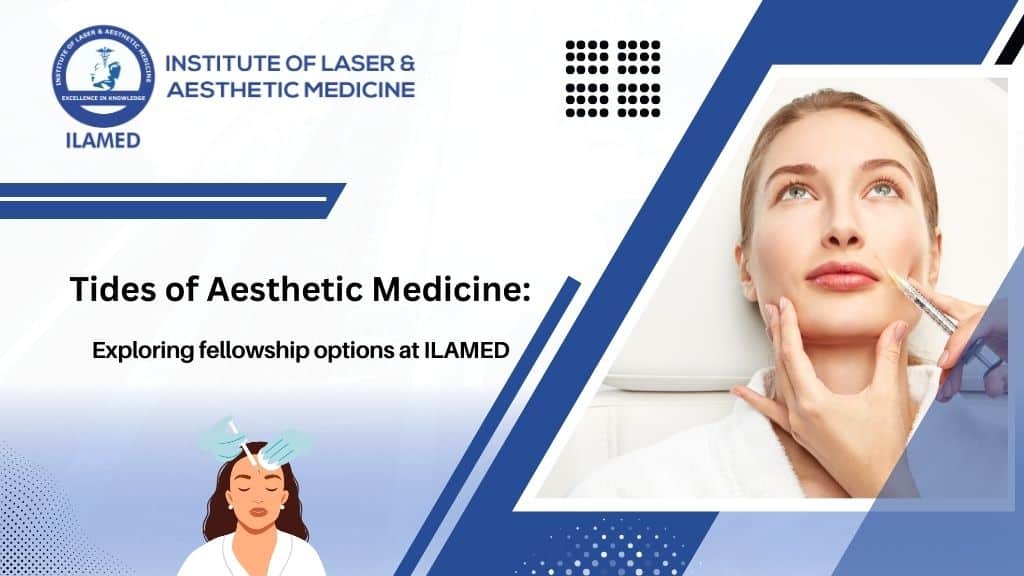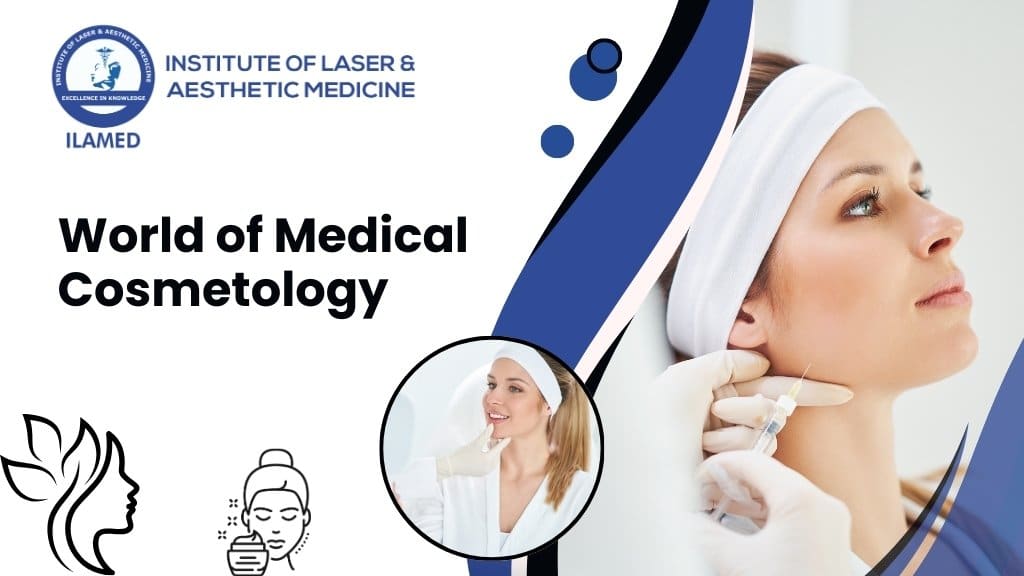This field enhances appearance through non-invasive as well as minimally invasive methods in Aesthetic Medicine. This has a burgeoning trend these days where, apart from Botox, dermal fillers, laser therapies, and several skin rejuvenation techniques can be included. The desire of people to look good puts a greater demand on good practitioners who can provide a safer and more effective aesthetic treatment.
Understanding Aesthetic Medicine
Aesthetic Medicine brings a healthy and fit look to its patients, unlike cosmetic surgery that sometimes uses invasive procedures, so there are longer periods for recovery. On the other hand, Aesthetic Medicine employs methods that are more minimal so there is a faster period of recovery and lesser risks involved. That’s why aesthetic treatments became much more accessible to all sorts of people, whether males or females, whatever their age.
In general, procedures in Aesthetic Medicine are carried out in outpatient settings, so a patient can resume his or her normal life almost immediately. Nevertheless, many preferred cosmetic treatments in Aesthetic Medicine are injectable types for wrinkles and hyaluronic acid fillers for facial filling, respectively. Nowadays, laser therapies are already commonly used for skin resurfacing and hair removal, among many more uses for the treatment. All of these technological advancements have thus brought greater outcomes without calling for major surgeries.
Techniques and Procedures in Aesthetic Medicine
Aesthetic Medicine involves various techniques formulated for beautification and treating different cosmetic problems. The most popular treatments in this line include:
- Botulinum Toxin Injections: Known to most people by the brand name Botox, these injections soften wrinkles and lines by temporarily paralyzing the facial muscles.
- Dermal Fillers are injectable substances that would add volume to areas such as the cheeks and lips, thus evening out wrinkles and restoring youthful contours.
- Chemical Peeling: Non-invasive procedures enhancing the texture and color of skin using certain chemical solutions.
- Laser Treatments: Utilizing advanced laser technology to address specific skin concerns, such as acne scars, age spots, and unwanted hair, through procedures like laser hair removal.
- Microdermabrasion. Just what rubbing entails: removal of dead skin for a fresh look.
- Non-Surgical Facelifts: Techniques such as thread lifts and radiofrequency treatments literally lift and tighten the skin without an invasive touch of surgery.
Such procedures enable the person to enhance his or her natural beauty by correcting such specific issues as sagging of wrinkled skin, decreased facial volume, or hair loss.
The Increasing Demand for Cosmetic Treatments
The demand for Aesthetic Medicine Courses in India and worldwide is going up, and India is no exception. The factors causing this trend are the raised awareness about aesthetic options, the influence of social media showcasing beauty standards, and shifts in culture towards self-care and personal grooming. As people increasingly aspire to improve their look for personal satisfaction or to gain professional benefits, so does the need for a qualified practitioner.
The market for Aesthetic Medicine Courses in India will grow significantly over the next coming years. It finds stimuli in the younger generation with more flexibility towards cosmetic beautification and emerging middle-class members with savings in their wallet. As such, an urgent need emerges for the effective training of a professional class able to successfully and safely practice these operations.
Relevance of Aesthetic Medicine Courses in India
To meet this increasing demand, many educational institutions have been offering specialized Courses in Aesthetic Medicine. It equips healthcare professionals with the skills to deliver a variety of aesthetic procedures; hence, these courses offer crucial topics like patient assessment, treatment planning, and post-procedure care.
There cannot be more relevant learning modules than Aesthetic Medicine Courses in India. The courses endow the practitioners with the essentials but prepare them to wade through the aesthetic and regulatory complexities of the aesthetic practices. The courses have a significant component of hands-on training wherein participants can get hands-on experience under expert guidance. So, the theory in practice ensures that candidates graduate well-equipped for taking on the workforce.
Academic Quality at ILAMED
ILAMED, the Institute of Laser & Aesthetic Medicine, is a premium standalone training facility offering Aesthetic Medicine Training Courses to specialists with its exclusive FAM program-Fellowship in Aesthetic Medicine it offers for medical specialists reaching for an understanding and the masteries of aesthetic procedure.
Key Features of the Fellowship in Aesthetic Medicine
- Comprehensive Curriculum: This FAM course covers virtually every subject based on Aesthetic Medicine that the practitioner should be aware of.
- Active Learning Environment: Learners participate in real-time sessions that encourage interaction with expert faculty and peers.
- The practice training forms a major chunk of the program in which all of these students can put the theories learned into practical use in a real-world environment.
Course Description and Syllabus
Six months duration is offered by ILAMED in Aesthetic Medicine that combines theoretical as well as practical teaching:
Curriculum Overview
General Information
- Introduction to Esthetic Medicine
- Aesthetic Anatomy and Facial Analysis
- Patient Consultation Techniques
Complex Operations
- Injectable Treatments (Botulinum Toxin, Dermal Fillers)
- Laser Treatments for Skin Rejuvenation
- Chemical Peels and Skin Resurfacing
Clinical Practice
- Hands-on experience on patients under live conditions
- Management of complications related to aesthetic procedure
- Ethical issues in aesthetic practice
Capstone Project
- They will execute a project which shall find embedding of their learning in practice, in the field.
Accreditation
The fellows will be issued with a certification after the Fellowship in Aesthetic Medicine, which will enhance their CV and further create doors to career paths in the aesthetic field.
Conclusion
This is an important step through which doctors can specialize in such a highly dynamic field. The curriculum encompasses the whole gamut of extensive and practical training that emphasizes ethics. ILAMED produces graduates to fill the rising demand for aesthetic practitioners in India. With the growth of the industry, enrollment in this fellowship will bring one not only advanced skills but also the path to a rewarding career in Aesthetic Medicine. Future prospects are bright for entrants in this field where continuous improvement in technology and techniques can help practitioners provide innovative treatments to their clients while meeting their desired results. Thus, ILAMED’s Fellowship in Aesthetic Medicine places aspirants at the cutting edge of this exciting industry.


